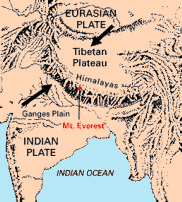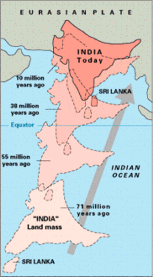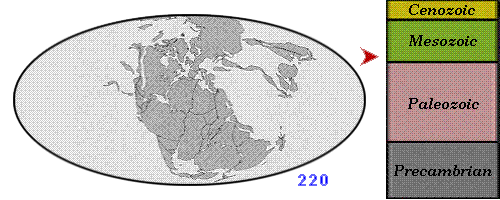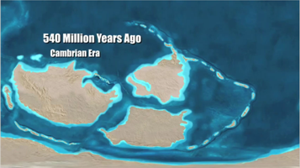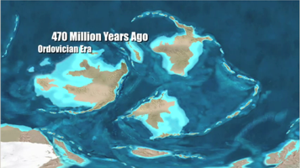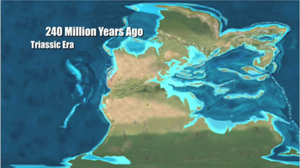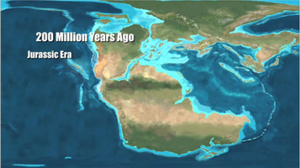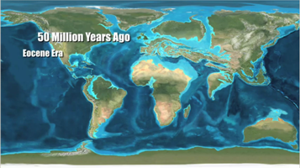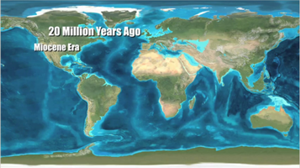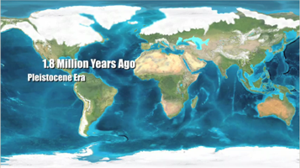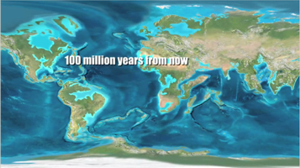| Plate tectonics explains the origin of mountain ranges as the products of the collisison between plates (continental or oceanic plates). For instance, Himalayas is resulted in the collision of Inidan and Eurasian plates from 50 million years ago; or Alps is the product of the collision between Africa and Europe plates. |
|
|
|
|
When drifting towards Eurasian plate, the Indian plate hit this plate and stucked in that position so far (left picture, below). The result of that conflict is a famous Himalayas range – look like a wrinkled forehead of an old Eurasian lady (right picture, below). |
|
|
|
|
|
The drift of plates to their current positions since Cambrian Era is illustrated in the image below (adapted from http://astro.wsu.edu/worthey/earth/html/md09.html):
|
|
|
A video clip below illustrates the drift of continents and its results since the beginning of the Earth up to now (!)
|
|
|
|
|
|
|
|
|
|
|
|
|
|
|
|
|
|
|
|
The question is the plates now continue drifting or already stopped ? Who knows ? 

